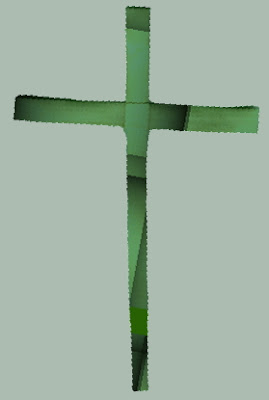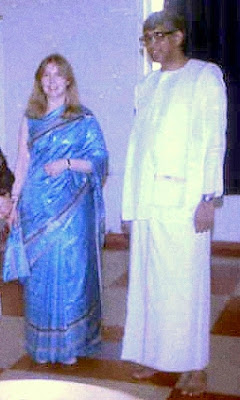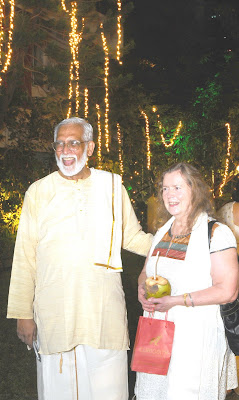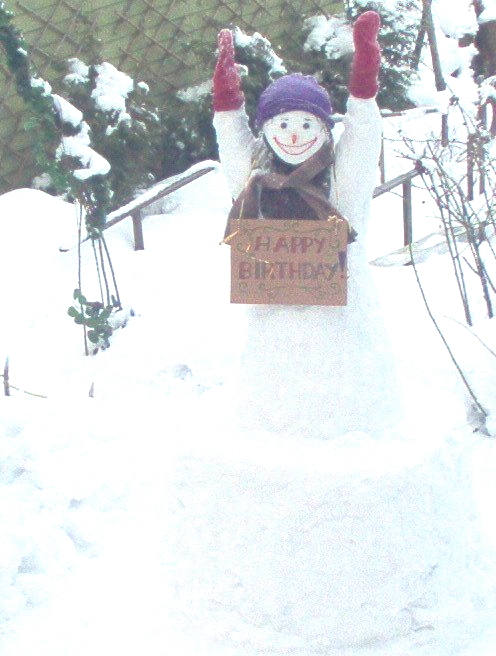In Finland, the situation is amazing that if you drop or lose something somewhere, even after a week or a month, it is likely to have been left there. The ordinary citizen does not want to take anything that belongs to someone else.
If anyone finds some money or a wallet, or even a key, on the street, he / she will hand it over to the Police. There could be a reward, but the wallet and the contents are not given to the finder. It stays in the Police Station till the rightful owner turns up.
When I was just 10 years old, we had a great cricket side in Bangalore. We used to play almost every evening after school. I was a slow right hand leg spin bowler. I could really turn that ball over a metre. If one recalls an entry on my Cathedral school pages, Jimmy Jameson (of MCC XI fame) used me to get some wickets in the House matches way back in 1954..
In Bangalore, we played cricket on a disused level graveyard very near Richmond Circle, which used to be right in front of the present Republic Nursing Home. No tennis ball for us as we had a real hard cricket ball to play with!
We were about 15 of us, ranging from those who were 12 years to the youngest, who was probably 5 or 6. But we were all cricket mad well before the days of Sunil Gavaskar or Sachin Tendulkar.
And we really played serious cricket for our age. Not just knocking the ball around. We had fielding practice, bowling practice and batting practice, before we set up teams and played a match.
One day, as I was walking home from school, I found a Rs. 10 note lying on the pavement. I had never held a Rs. 10 note in my hand before.
As I walked home I wondered what I should do with it. My natural impulse was to hand it over to my mother. But something stopped me doing that.
That evening, while we were playing cricket, a thought struck me. I suggested we should organise to play a cricket match against another side. I felt I could use the Rs. 10 to celebrate our victory hoping, of course, we won!
So I organised a two innings match with a team on the other end of Bangalore, the team of one of my school classmates, for a Saturday morning.
We had 11 players and we set off early morning equipped to play and win. We did.
Then I revealed my cunning plan.
As it was only around 2:30 in the afternoon, I suggested we would go to the matinee show in a theatre, as the movie "Ivanhoe" had just been released. I did not reveal where I had got the money or how much, and no one asked me.
The boys were excited as some of them had never ever been to the theatre.
At that time, entrance to a cinema hall used to cost 4 annas for a seat (4 seats for rupee) for a child. The cost for all 11 of us was less than Rs. 3.
We sat through the first half, which in those days was usually Indian News Documentaries, a Walt Disney cartoon as Mickey Mouse, Donald Duck, Pluto or Bugs Bunny, and trailers of coming films.
We were really having a good time. I got chips for everyone during the interval. Another half a rupee!
When the lights came on before the real movie started, I looked back, and there, sitting a few rows behind me, were three of my cousins (the George Matthan family of Ammnikochamma, Baluchachen and Anand), and several friends.
They were as surprised to see me as I was to see them.
I knew I was sunk, as they would surely tell my mom, as we lived just a stone's throw from their house.
We enjoyed the movie as it was a real classic - I cannot remember the names of the stars but I certainly thought I had seen a good film. Lots of jousting and fighting. Ideal fare for children.
As soon as I left the theatre, I knew I had better come clean with my mom.
I knew my dad would be furious, but I knew if I handled my mom right, maybe I could get away with a scolding and a serious telling off.
After the movie I reached home around 5:30 in the evening.
My mom asked how the cricket had gone. I told her that we had won. Then I blurted out what I had done.
She looked at me very gravely and asked whether I understood what I had done. I told her that I fully understood. Igave her the rest of the money. (The value of Rs. 10 in 1953 would probably be equivalent to about Rs. 5000 of today!)
She decided that she would not tell my dad, who was still at work. (Yes, he worked till almost 7 pm even on a Saturday!)
She said she would deal with this matter on Monday.
Sure enough, it was lucky I had been quick, as no sooner had I finished with her, the phone rang. It was cousin ringing to tell my mom what she had seen.
Mom was sporting enough to tell her that I had told her what had happened and that she would handle it, but on no account should my dad know.
That taken care of, on Monday after school, she took me to the Police Station where one of our family friends, Doug Wilson, was the Police Inspector.
The Wilson family were very close family friends. Besides Doug and Marge, they had 5 children - Abner, Beverley, Cedric, Dinky and Zena.
Marge was a Protestant and went to the same church as us, St. Mark's Cathedral. Doug had been a Roman Catholic but had been ex-communicated as he did not agree to bring up his children in the Roman Catholic Church. He did not attend the Protestant Church, but he was a example of a wonderful Christian man as he was always happy and smiling.
His five children and us four kids were closer than most, as when we lived in Mysore, Inspector Wilson was also posted in Mysore. Dinky and I were the same age and she was the one who looked after me when I went to kindergarten for the first time. We used to walk back from the Good Shepherd Convent every afternoon.
When we moved to Bangalore, Doug was also transferred and our family friendship continued.
At the Police Station, my mom she gave Doug Rs. 10 and told him that I had found the money and was returning it.
Doug was astonished at the honesty of my mom (and by inference, me). He told her that he would file a report. If the money was claimed within 14 days, I would be entitled to a small reward. If it was not claimed within 14 days, the money would be mine.
The money was not claimed. After 14 days Doug sent a Police Constable round to our house with the money and a signing off form.
My mom took the money. She kept what had been remaining from my adventure. She told me I could give it to any charity that I wanted.
I do not remember which charity I chose. But it felt good at that moment that I was now not an official robber in the eyes of my mom.
This lesson has stood me in good stead all these years. Thanks mom!














